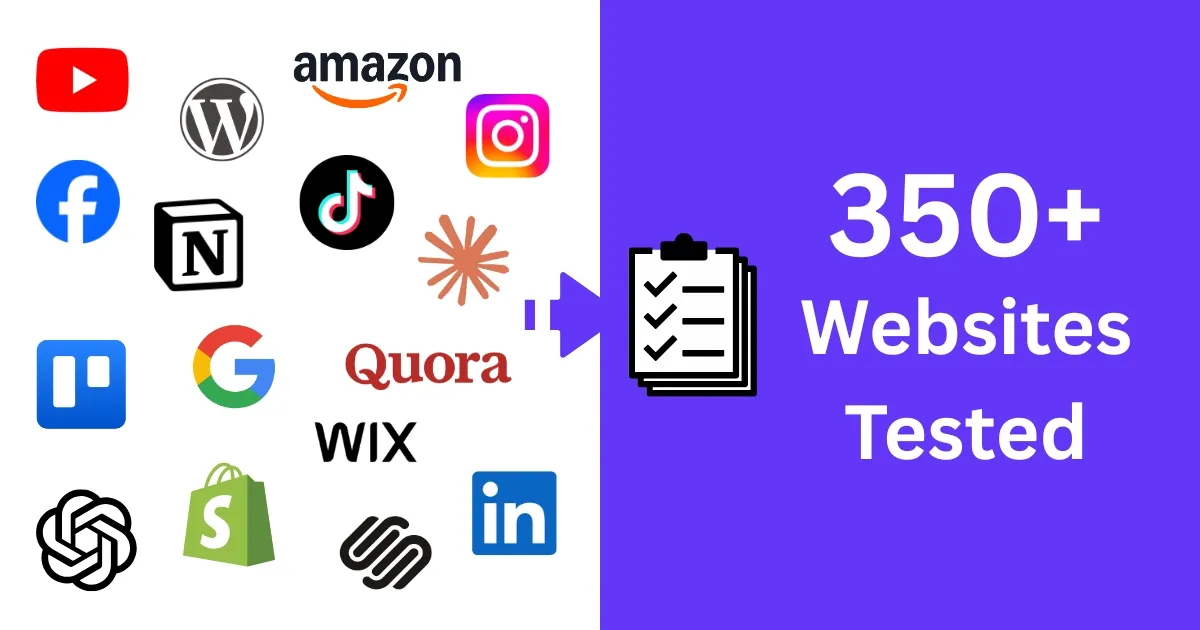
66.5% of Web Content Dead Since 2013: The Visual Content Crisis
John Choi
Web-to-PDF SpecialistHelping 28+ professionals save time with web-to-PDF conversion tools
If you've ever clicked a bookmark only to find a "404 Page Not Found" error, you've experienced link rot firsthand. But what if we told you this isn't just an occasional annoyance—it's a widespread crisis affecting the majority of web content?
For anyone who relies on web content—whether it's your portfolio, product catalogs, research materials, or cherished memories—the data below reveals just how urgent this problem has become.
Key Takeaways: The Web's Vanishing Act
What the data reveals:
- 66.5% of links from 2013 are now dead – More than half of the web from a decade ago has vanished (Ahrefs, 2024)
- The older the content, the higher the risk – 38% of pages from 2013 are gone, vs lower rates for newer content (Pew Research, 2024)
- 44% of backlinks disappear within 7 years – Nearly half of all link value erodes over time (Linkody study, 2022)
- Government pages disappear too – 21% of government web pages containing COVID guidance were inaccessible within just 2 years (Pew Research, 2024)
- Social media content vanishes fastest – 18% of tweets disappear within just 3 months (Pew Research, 2024)
The Scale of the Visual Content Crisis
Every day, millions of images disappear from the web, creating a cascade of problems that affect businesses, creators, and users alike. The crisis extends far beyond simple inconvenience—it's fundamentally changing how we need to think about digital asset management.
The Image Hosting Apocalypse: Real Examples
Major Service Shutdowns:
- TinyPic - Shut down September 16, 2019, affecting millions of forum posts and blogs
- Photobucket - Switched to $399/year model in 2017, breaking billions of embedded images
- ImageShack - Ended free tier, images "expire" and show ads instead
Result: Countless broken images across forums, eBay listings, and personal websites
Why Traditional Backups Fail
Most people assume their images are safe, but traditional backup methods have critical limitations that leave visual content vulnerable:
The Reality Check
⚠️ Why Traditional Methods Fail for Modern Web Pages
HTML Save: Stores URL references, not actual images → breaks when source disappears
MHTML Format: Struggles with JavaScript-rendered content → misses dynamic images
Manual Screenshots: Requires scrolling and waiting for each section → impractical for long pages
Right-click Save: One image at a time → impossible for galleries with hundreds of images
When dealing with modern websites—JavaScript-heavy pages, infinite scroll galleries, or dynamically loaded content—these traditional approaches fall short. You need a solution built for today's web architecture.
The Solution: Comprehensive PDF Archiving
Modern PDF capture tools offer a fundamentally different approach to preserving visual content. Unlike traditional backup methods, comprehensive PDF archiving addresses the core weaknesses of conventional approaches with proven technical advantages.
How PDF Archiving Revolutionizes Image Preservation
1. Complete Image Capture Modern PDF tools capture every image on a page, including:
- Lazy-loaded images that appear on scroll
- Dynamic content loaded via JavaScript
- Images in popup galleries and lightboxes
- Hidden images in tabs and accordions
- Background images and CSS-loaded graphics
2. Quality Preservation Excellence PDF archiving maintains quality because PDFs are not rasterized:
- Images embedded at original resolution without downscaling
- Vector graphics remain scalable, not converted to pixels
- Text preserved with actual fonts, not as images
- No quality loss from format conversion
- Color profiles and transparency maintained
3. Contextual Documentation Images don't exist in isolation. PDF archiving preserves:
- Surrounding text and captions
- Page layout and design relationships
- Navigation structure
- Source URLs and access timestamps
4. True Digital Ownership PDF archives provide:
- Local files stored on your devices
- No dependency on third-party services
- Unlimited storage duration
- Freedom to organize as needed
- Ability to create multiple backup copies
Key Features for Effective Web Page Archiving
When evaluating PDF archiving solutions, look for these essential capabilities:
Must-Have Features
- ✅ Full-page capture - Automatically scrolls and captures entire pages, not just the visible viewport
- ✅ JavaScript execution - Renders dynamic content and ensures all images load properly
- ✅ Lazy loading support - Intelligently waits for images that load on scroll
- ✅ Original quality preservation - No downscaling or compression of images
- ✅ Infinite scroll handling - Captures social media feeds and endless galleries
Quality & Reliability
- ✅ Smart wait times - Adapts to slow-loading content without missing images
- ✅ Error recovery - Automatically retries failed elements
- ✅ Capture verification - Confirms successful archiving before completion
- ✅ Multiple format support - Flexibility in output options
The FullPagePDF Advantage
When it comes to preserving your visual content against the link rot crisis, FullPagePDF stands out as the comprehensive solution designed specifically for this challenge. Our tool addresses every pain point of image preservation with features built from real-world needs.
Why FullPagePDF Excels at Image Preservation
Intelligent Complete Capture
- Automatically detects and waits for all lazy-loaded images
- Captures infinite scroll galleries without missing content
- Handles dynamic JavaScript-loaded images seamlessly
- Preserves images from popup lightboxes and modal windows
- Includes background images and CSS-embedded graphics
Uncompromised Quality Standards
- Maintains original image resolution without any compression
- Preserves color accuracy and transparency
- Keeps vector graphics scalable within PDFs
- Delivers professional-grade archives suitable for any purpose
Effortless Workflow Integration
- One-click capture for entire pages with all images
- Simple workflow for archiving important content
- Straightforward file management
Complete User Control
- Local storage means you own your archives forever
- Export flexibility for different use cases
- Organize archives however suits your needs
- Share or backup without restrictions
Proven Reliability
- Tested on hundreds of complex websites
- Regular updates to handle new web technologies
- Active development based on user feedback
- Comprehensive support documentation
Don't Let Link Rot Destroy Your Web Content
The evidence is overwhelming and the trend is accelerating. With 66.5% of links dead since 2013 and 25% of recent web pages already vanished, we're facing a digital preservation crisis of unprecedented scale.
Consider what's at stake:
- Web pages showcasing your portfolio and years of work
- Product pages and catalogs critical to your business
- Blog posts and articles with embedded images
- Educational resources and visual tutorials
- Research materials with charts and infographics
Every day you wait, more web pages with valuable images become vulnerable to disappearing forever. When image hosting services shut down (like TinyPic) or switch to paid models (like Photobucket), the web pages that embedded those images are permanently damaged. Creating local archives of complete web pages is one of the most effective ways to protect against this digital decay.
Ready to Protect Your Visual Content?
Join users who've already secured their important web content. Try FullPagePDF free and experience how easy it is to create permanent archives of web pages with all their images intact.
Start with our 15-day free trial:
- Unlimited full-page captures
- No credit card required
- Keep all PDFs created during trial
- See real results with your own content
Don't become another statistic in the link rot crisis. Take action today to create permanent archives of the web pages that matter to you.
Try FullPagePDF Free
Convert any webpage to PDF with a single click. No sign-up required for your first 10 captures.
Install Chrome Extension